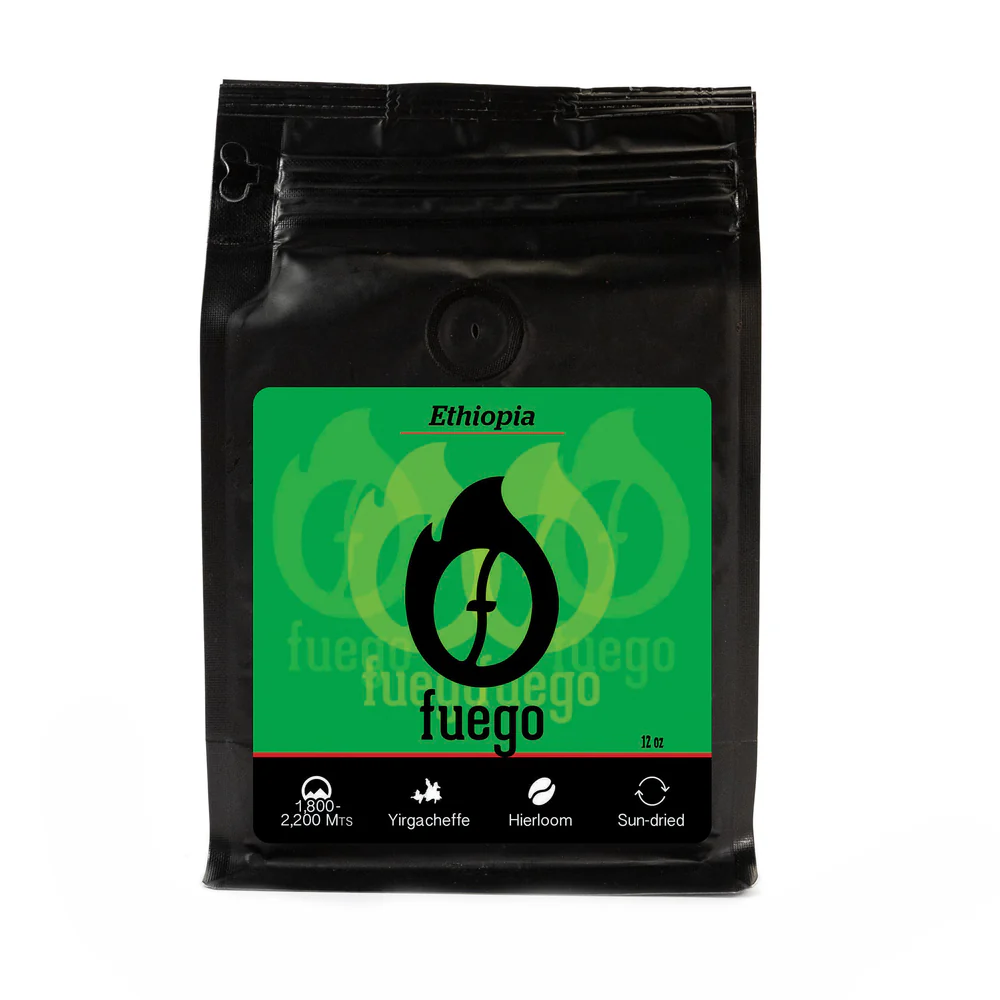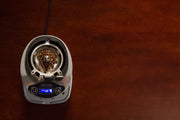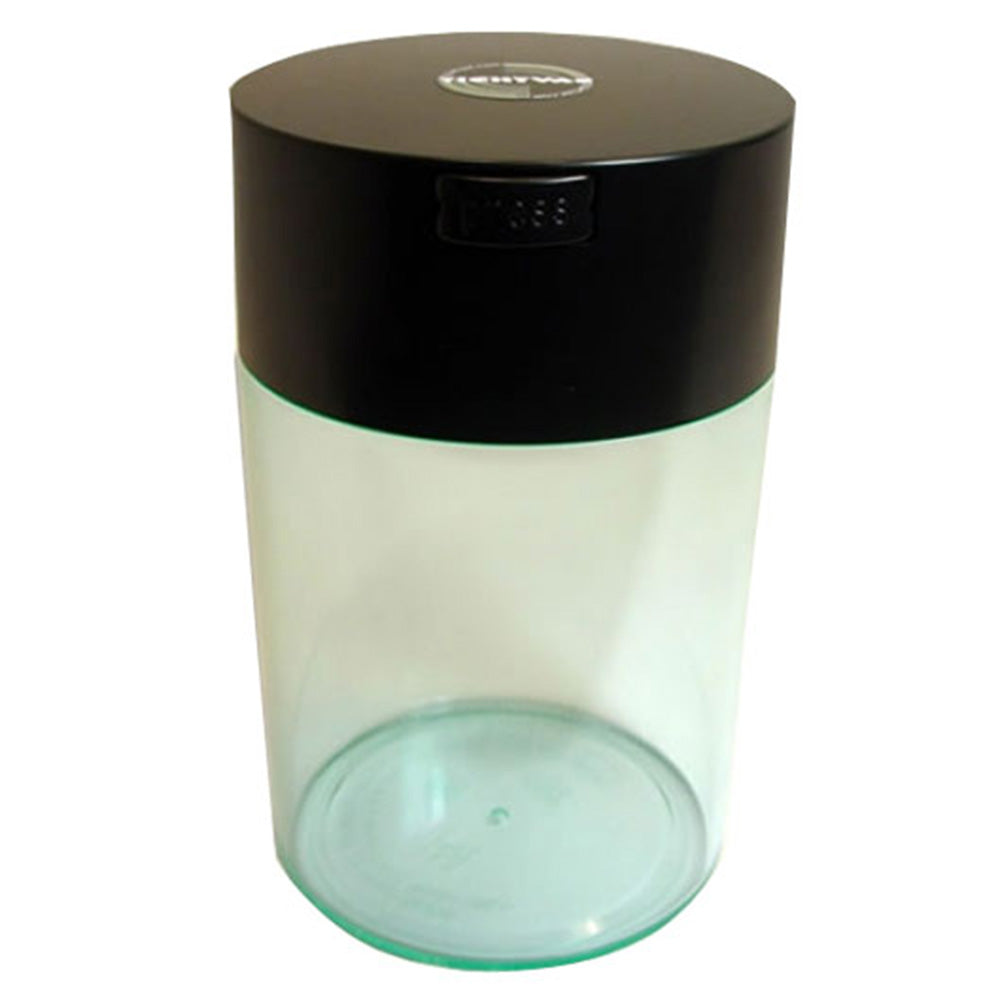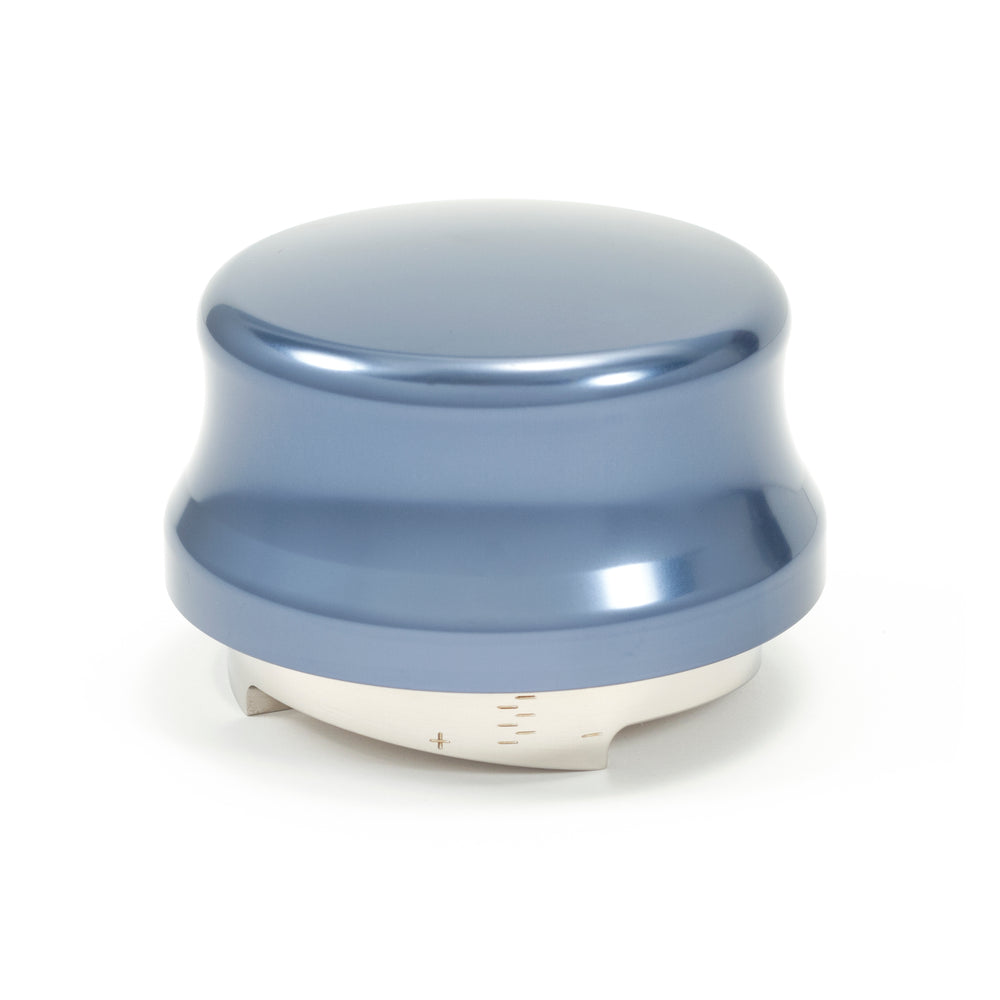How to Keep Coffee Beans Fresh
Updated for 2022
If you talk to most coffee experts, they’ll tell you that the age of your beans has a huge effect on the end product in your cup. But how important is it really to use fresh beans?
Over on our YouTube channel, I ran an experiment to test the effects of time and different storage methods on coffee beans when being used for espresso. For this test I used a fresh, 5-pound bag of Fuego Coffee Roaster’s Ethiopia only 5 days from roast as the test subject. We tested to see how beans age over 30 days when stored in three of the most popular options for coffee drinkers – in the original bag, in an air-tight container, or in a freezer.
The goal of this 30 day experiment was to find out the changes in extraction time, appearance, and taste. Read on to find out the surprising results this experiment revealed.

$18.00
Coffee Test Parameters
On day 1 of the experiment, we opened the bag of Fuego Coffee Roaster’s Ethiopia and immediately set aside some of the beans in a Coffeevac air-tight container. These beans stayed sealed for the duration of 30 days as a control for the experiment.
To test how freezing these beans impacts freshness, we measured out 15 individual doses of 18 grams and put them in the freezer.
The rest of the beans stayed in the original roaster’s bag. This is not ideal storage in the real world, but for the sake of this testing, we predicted it would highlight, or even expedite, the effects of aging.
As is the case with any controlled experiment, the goal was to maintain consistency, so we chose all of the equipment used in this experiment to minimize variables in extraction. By single dosing with the Ceado E37SD grinder, we ensured there were no leftover grounds from the previous day.
To make sure that every shot was as consistent as possible, every dose was leveled with the Asso The Jack Leveller. This provided consistent distribution and compression without inconsistencies in tamping pressure or technique.
When it came to choosing an actual machine to use, we chose the ECM Synchronika with PID temperature control — again to ensure consistency from shot to shot. Shots were pulled in a temperature-controlled room at the same time of day to minimize even slight variation in humidity or other factors.
To check the retention on the grinder, we measured 18 grams of whole beans with an Acaia Pearl Scale and added a small spritz of water with an RDT sprayer to moisten the beans and control static before grinding. The output came out to be 18 grams, which means there was essentially zero retention. This process was repeated a few times, always with .1 gram more than or less than of variability.
To weigh our shots, we used an Acaia Lunar scale on the drip tray with a timer set to start when it registered the first drops of liquid. The goal throughout the experiment was to dial in a 2:1 brew ratio of 18 grams in to 36 grams out in 25 seconds from first drip.
-
Complete Your Set-Up with the Coffeevac 1 lb CFV2 Storage Container The airtight Coffeevac CFV2 has a 1-pound (500 grams) capacity and lets you safely store your coffe...
-
The E37SD is a dedicated single dose grinder from Ceado, designed for use with all methods of coffee preparation. Its massive 83 mm OpalGlide coated burrs produce consistent grinds with near zero retention. The included barista tools are designed to eliminate static for perfect dosing.
-
The Asso Coffee Jack coffee leveler is a distribution tool used to groom the coffee in your portafilter quickly and easily. With the Jack, you can expect a much easier...
-
A scale for the pro, the barista, and the discerning coffee lover at home, the Acaia Pearl offers precision you could only find in a lab. Now, cafes the world over are coming to rely on this scale to deliver cutting-edge results in the cup.
-
This custom ECM Synchronika dual boiler espresso machine was made in collaboration with legendary automobile manufacturer AMG and features best-in-class brewing and steaming performance.
-
The ECM Synchronika is ECM's flagship dual boiler espresso machine, now available in limited edition colors to add a new dimension to this legendary E61 dual boiler machine.
-
The ECM Synchronika is ECM's flagship dual boiler espresso machine, now available in limited edition colors to add a new dimension to this legendary E61 dual boiler machine.
-
This custom ECM Synchronika dual boiler espresso machine was made in collaboration with legendary automobile manufacturer AMG and features best-in-class brewing and steaming performance.
Coffee Shot Results
On the first day, we dialed in our machine and taped down the gear knob to avoid any accidental adjustments of the equipment we were using. To ensure we were consistently tasting the shots the same way, the method we followed was to stir the shot and take a sip before noting the flavor every time. We kept these flavor notes, as well as notes on the dosing information and shot length, in a log to compare the changes over the course of this experiment.
We did have some preconceived ideas going into this experiment – namely, we thought that as beans age, you generally have to grind finer to get the same extraction time if you’re keeping the same dose. To quantify this change, we made sure to leave the E37SD Grinder untouched at the initial grind setting for the duration of the experiment and measure the difference in time it takes to get as close to a 2:1 brew ratio of 18 grams in to 36 grams out when manually shutting off the pump.
Every day for the next 30 days, we pulled a shot using the same exact settings and technique to find out what would happen. Each shot’s taste and timing was noted in the experiment log to make comparing different days as easy as possible. Right off the bat, the results were not what we expected.

The Complete Guide to Coffee Grinders
Before the experiment, we thought that extraction time would get faster as time passed, but there was a surprising amount of inconsistency in the timing for the first few days of this experiment. The first shot was 25 seconds, then the next was 41, then 26, then 53. For the next week, the time actually increased, indicating that my grind was too fine, even though I hadn’t changed anything and the coffee was properly dialed in one day one. At this point, we started to worry about choking the machine and ruining the entire experiment. But, after day 10 things started to turn a corner, and extraction times began steadily decreasing again.
It's worth noting that from day 15 on, I took this entire set-up out of the office and recreated it at home. This was due to having to work remotely with the COVID-19 pandemic ramping up in the middle of the experiment.
For the next week, shot times were faster, falling between 30 and 35 seconds, and the large, inconsistent swings experienced early on were stabilized. The final 9 days of testing resulted in a steady, consistent decrease in extraction time, which confirmed our initial expectations.
We came to the conclusion that when looking at extraction time versus bean age, the first half of the month was much less consistent than the second. There was a clear point when extraction time turned a corner and started decreasing, which also resulted in a shrink in variances and more consistent shots for the remainder of the experiment.

High Speed vs Low Speed Grinders
Appearance of Coffee
As for appearance, the results were far from earth-shattering. Any small variations throughout the month were likely due to the differences in extraction, rather than the time having a direct impact on the appearance.
That said, the crema on the shot pulled on day 1 had noticeably more depth and color compared to the older beans. This makes sense considering fresh-roasted beans retain a large amount of CO2 before degassing as time goes on.
Coffee Tasting
The last thing we focused on throughout the experiment was the taste of the shots we pulled. It's important to mention that when shots were improperly dialed in, such as the days when the extraction times exceeded 1 minute, the taste was wildly different. Additionally, different roasts and batches will behave differently, so these results only relate to this specific test.
On day 1 of the experiment, the espresso was very bright, acidic, sour, and almost overpowering, which was expected of beans that fresh.

How To: Basic Espresso Technique - Dialing in Grind Size
As the first week went on, some of the sourness started to fade away and was replaced by sweet, fruity, and tangy tastes. On day 10, I noted hints of bitterness in the shot. This was also the day of the longest shot pulled during the entire experiment, so much of the bitterness can be largely attributed to over-extraction. As extraction time started to come back down, sourness started returning in the form of sharp and tart flavors.
Day 16 was when I took note of what I considered (at the time) to be the best shot of the experiment, citing a great balance of brightness and full-bodied flavor. As extractions continued to stabilize, some of the early bright, tangy, and grapefruit flavors returned.

A day-by-day breakdown of how extraction time, appearance, and taste of coffee beans changes over a 30-day period.
Over the course of the third week, the acidity toned down, and I felt like I was drinking a more balanced and enjoyable, less overpowering version of the shots pulled on the first few days. By day 28, the fruit flavor had faded a bit and the results remained that way for the final three days of tasting.
In summary, the tastes varied widely throughout the month but seemed to be tied more to extraction time than the age of the beans.
From a subjective standpoint, my favorite tasting shots were pulled on days 21-27. On those days, the flavor profiles seemed the most mature and balanced without being overwhelming.
In this experiment with these particular beans, one month was not long enough to make the espresso taste old or stale, even when stored in the original paper bag.

Arabica vs. Robusta Coffee Beans
Freezing Coffee Beans
So, can you freeze coffee beans?
We revisited the beans that we set aside in the beginning of the experiment, which remained sealed or frozen over the course of the 30 days. The first test that we put the frozen beans through was to see how, without adjusting the grinder, their extraction time compared to the bagged beans.
Most of the frozen beans were left out overnight to thaw, but kept completely sealed in their own bags. Some were also left in the freezer so that we could find out what happened when frozen beans were ground and brewed.
The next morning, we started with the now-thawed beans. With all other factors identical to the rest of the experiment, I pulled two shots; both in 36 seconds. In comparison to the paper-bagged beans which pulled a shot in 27 seconds the day prior, something was definitely different.
Based on the length of the shots pulled from the paper-bagged beans over the course of the month, the thawed beans after 30 days in storage pulled shots at the same level as days 2-4, day 16, or day 22. Based on this, it does appear the freezer did something to slow the aging of the beans.
When I stirred and sipped the shots pulled from the thawed beans, I noticed the taste was very sour and reminiscent of the first few days of the experiment. This led us to the conclusion that the "age" of the thawed beans were closer to days 2-4 of the experiment. As for the still frozen beans, I pulled two shots and the extractions came in at 36 seconds and 32 seconds. They tasted identical to the shots from the thawed beans.
For the final storage method, the air-tight container, two shots were pulled in 36 seconds and 37 seconds. These times were essentially the same as the frozen and thawed beans, and the taste was similar but with better balance and an acidity toned down to a tolerable level.
Coffee Grinder Adjustment
The very last part of the experiment was to stop comparing apples to oranges when it came to taste. For the first time in a month, we changed the grinder adjustment knob.
We dialed in the three different storage type samples back to the experiment's ideal brew ratio and time of 18 grams in and 36 grams out in 25 seconds, and compared the taste of all three.

Coffee Grinder Terminology
This much more closely resembled a real-world scenario of keeping your grind dialed in for your current beans and conditions, and where the tastes could be accurately compared.
The bagged beans tasted about the same as at the end of the experiment, which makes sense considering the tests ended with a 27-second extraction time.
The beans from the air-tight container tasted incredible. The flavor was rich and balanced with sweet and tropical fruit flavors. I thought this was the best tasting shot of the entire experiment.
Last up were the frozen and thawed beans. While they didn’t taste vastly different from the previous shots, they were still a bit too bright for my liking. Advocates of freezing coffee note that the cold temperatures slow the rate of CO2 degassing and oxidation within the beans.
While freezing beans may be helpful for storage periods much longer than 30 days, it didn’t appear to do much during this experiment. One reason for this may have been that the beans were put in the freezer before they had a chance to sufficiently degas and got locked in at a premature, overly-sour stage before flavors could fully develop.

How to Clean a Coffee Grinder
Key Takeaways
- Grinding your own coffee beans? Adjust, Adjust, Adjust: Especially with fresher coffees, the variation from day to day, or even within a single day, is enough to throw off your entire extraction and flavor. The chemistry of the beans is changing dramatically as they degas and stabilize in the first couple weeks. During this time, you may experience more fluctuation than normal and go through more coffee, dialing in to your specific parameters. If you’re using slightly older beans, this won’t be as much of an issue; you’ll just have to keep an eye on your shot time and make micro-adjustments as you go, likely toward a finer grind.
- How long do coffee beans last?: Even with a specialty coffee from a micro-roaster that’s intended to be used fresh, the best shot I had was a properly dialed-in extraction 31 days from roast. Compare that to a bean blend from a commercial roaster and those sealed bags can typically stay good for many months without going stale.
- Coffee bean storage: The biggest enemies of coffee are air, moisture, heat, and light. While we don’t suggest leaving your beans out in an open bag for an extended period of time, you’re generally going to be fine keeping smaller quantities sealed in a roaster’s bag with a one-way valve in a controlled environment. If you want to be a little more thorough, get an air-tight container and store the beans in a cool, dark place. For long-term storage, more than a couple of months, the freezer may be your best bet. However, we advise that you let the beans rest for a few days to a week, depending on your roast, before putting them in the freezer. This will allow them to degas and lock in their flavor closer to their peak.
- How to make coffee taste better. There’s no one-size-fits-all answer to coffee. While I preferred the espresso shots I pulled in the third week of the experiment, somebody else would surely prefer those in the first week, or even the fourth. Each palette is unique, and there’s no “right” or “wrong” when it comes to taste preference. Get to know your equipment, your roasts, and your own taste preferences to find a storage and brewing method that suits you. This may take some time and experimentation of your own, but isn’t that part of the fun of home brewing?
In Conclusion
This process answers some questions but also leaves the door open for more experiments, such as longer time periods or different roasts. If you have an idea for something you’d like us to test out let us know!
For even more tips, check out our video on How to Keep Coffee Beans Fresh: A 30-Day Espresso Experiment. Make sure you also follow us on Instagram, Facebook, Twitter, and YouTube and sign up for our email newsletter to stay up to date on any new experiments we conduct as well as any deals, promotions, and new product announcements.
 USA
USA






